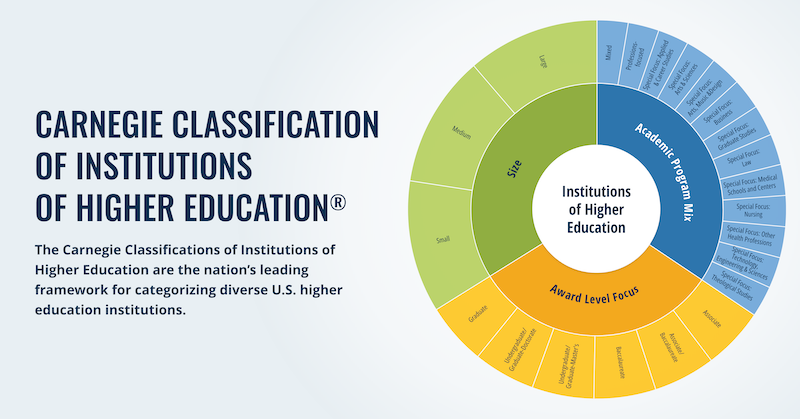Editor's Note
A new NSSE yearbook chapter, co-authored by Jon Dolle, Louis Gomez, Jenn Russell, and Tony Bryk sheds light on Carnegie’s approach to building professional communities as Networked Improvement Communities and its relationship to design-based implementation research (DBIR). This post summarizes and builds upon that chapter.
For the last five years, Networked Improvement Communities (or NICs) have been at the center of Carnegie’s work. Many observers have been uncertain how to categorize NICs within the field of education research. Design-based implementation research (DBIR), in particular, bears a family resemblance to a portion of the work done by NICs. But NICs are not a research approach, and their raison d’être is not theory building. Here is a brief exploration of similarities, differences, and the productive relationship that can exist between the two.
Similarities
The umbrella of DBIR covers research that generally adheres to four principles:
(1) “A focus on persistent problems of practice from multiple stakeholders’ perspectives;
(2) “A commitment to iterative, collaborative design;
(3) “A concern with developing theory and knowledge related to both classroom learning and implementation through systematic inquiry;
(4) “A concern with developing capacity for sustaining change in systems.”
When broadly interpreted, these principles characterize many of the activities in which NICs engage.
Carnegie’s Community College Pathways NIC, for example, is organized around the instructional challenges of diverse community college faculty (Principle 1). Its improvement work is conducted through rapid Plan, Do, Study, Act (PDSA) cycles and supported by a variety of analytic approaches (Principles 2 and 3). As Pathways members and leadership test new change ideas and learn more effective implementation strategies, this knowledge gets represented in many different forms, including revised driver diagrams (our theory of change), updated change packages (a mechanism for sharing changes), as well as published reports and white papers (Principle 3). And all of the Pathways work is focused on capacity building with the goal of systems change (Principle 4).
Given these similarities, the temptation to classify NICs as a form of DBIR is understandable.
Differences
Carnegie’s resistance to categorizing NICs as a research approach can be stated succinctly: a NIC is a professional community structured around the accomplishment of a shared improvement aim. It is not an approach to research, though NICs use research as an essential aspect of their work and, on occasion, engage in research themselves. Just as it would be odd to categorize a network of hospitals as an approach to clinical research, the DBIR label fits some NIC activities but it is not their reason for being. In both cases, networks use and sometimes engage in research, but they are not research networks. On its own, producing new and better knowledge is rarely sufficient to affect system-level improvement. NICs are a mechanism for making new knowledge a live resource within a system.
As improvement-oriented social organizations, NICs prioritize practical “know how” over theoretical “knowledge that” something might improve a system.
Beyond this fundamental difference in purpose, there is another reason to distinguish NICs from DBIR. As improvement-oriented social organizations, NICs prioritize practical “know how” over theoretical “knowledge that” something might improve a system. The only way to bridge the evidentiary gap between “knowledge that” and “know how” is to learn through the process of actively changing a system. NICs learn about practice by actively trying to improve it. All the elements of a NIC (its membership, its aim, its theory of action, its core capacities, etc.) are organized around enabling the kind of system learning necessary for effective and reliable improvement at scale.
We posit that there are at least four network capacities that can enable distributed improvement work:
- A rapid analytics infrastructure is a core capacity of the hub that helps collect, manage, analyze, and share data across the network.
- Common tools and routines that enable disciplined inquiry are critical to coordinating member activities across a dispersed professional network. They facilitate network learning and engagement that is essential to scaling improvement within an education system.
- Innovation conduits are the way promising ideas inside or outside of the network are identified, tested, refined, and scaled.
- A culture that embraces a collaborative science of improvement supports the development of professionals committed to collaborative inquiry around a shared problem.
A Productive Relationship
Because DBIR is a research approach, its primary knowledge products are familiar: new, empirically grounded theories and explanations of social phenomena. DBIR recommends developing these theories and explanations in close partnership with practitioners, as well as “developing the capacity of the entire system to implement, scale, and sustain innovations” (Fishman et al, p. 145). However, research typically doesn’t develop capacity on its own. (If it did, academic journal subscriptions would likely exceed those of major newspapers and pop culture magazines!) Consequently, DBIR needs a coordinating entity with the capacity for intelligent integration of the knowledge that it produces into a system. NICs are one such coordinating mechanism.
DBIR needs a coordinating entity with the capacity for intelligent integration of the knowledge that it produces into a system. NICs are one such coordinating mechanism.
The confusion over the relationship between NICs and DBIR arises because NICs do, in part, engage in inquiry that can fit under the umbrella of DBIR, and also because the different aims of this inquiry are easily confused. The knowledge that results from academic theory building may or may not develop capacity within a system. Academic theory often plays an important role in improvement efforts, especially as a resource for testing and innovation: it can help improvers understand problems of practice, guide the development of practical theories, and generate change ideas for testing. Research is conducted as a means of making progress towards an improvement aim, but the ends of a NIC—what the community agrees to hold itself collectively accountable for—is the improvement of practice at scale. Theory building is a priority only to the extent that it advances this aim or our collective capacity to pursue such aims.
As the body of knowledge produced by DBIR grows, NICs are a natural mechanism for making these theories a vital resource for improvement within and across educational systems. NICs will also likely contribute to this body of knowledge, but only in so far as it advances shared improvement aims or enhances the collective capacity to improve.
Learn More
To learn more about DBIR, check out the other chapters in the NSSE volume, as well as two excellent articles by Bill Penuel, Barry Fishman, and colleagues.
April 14, 2014
Carnegie addresses the challenge of teacher retention in its latest publication, Developing an Effective Feedback System, by presenting a feedback framework to help beginning teacher feel supported and engaged.
May 28, 2014
As Carnegie Senior Associate Susan Headden writes in her recent report "Beginners in the Classroom," public education loses a lot of new teachers to attrition and pays a heavy price in talent and treasure.







